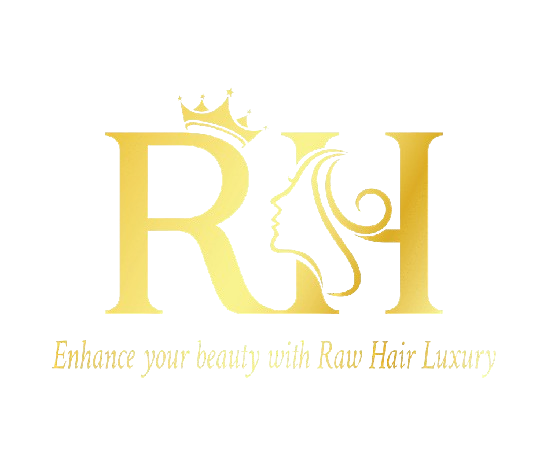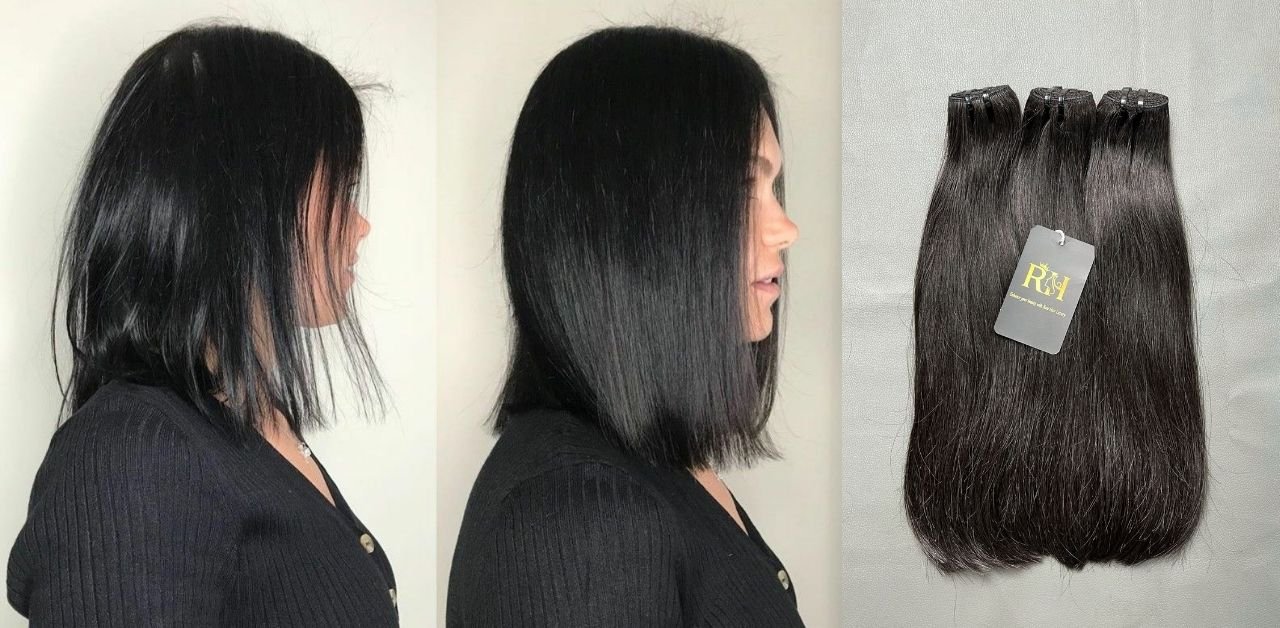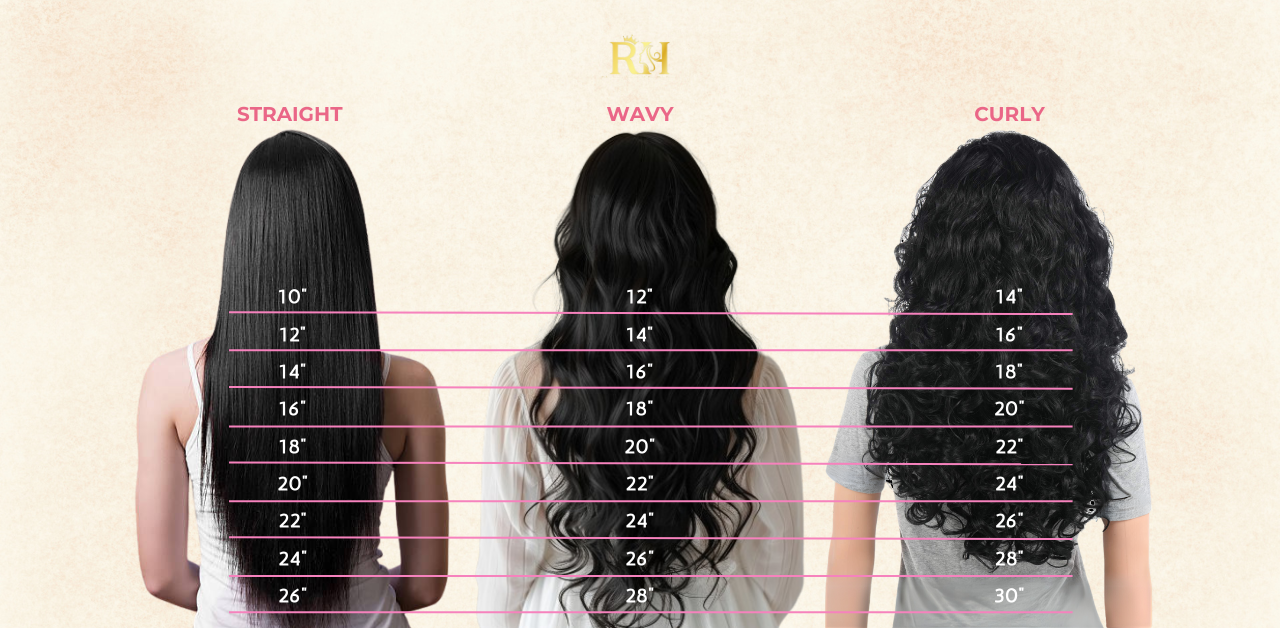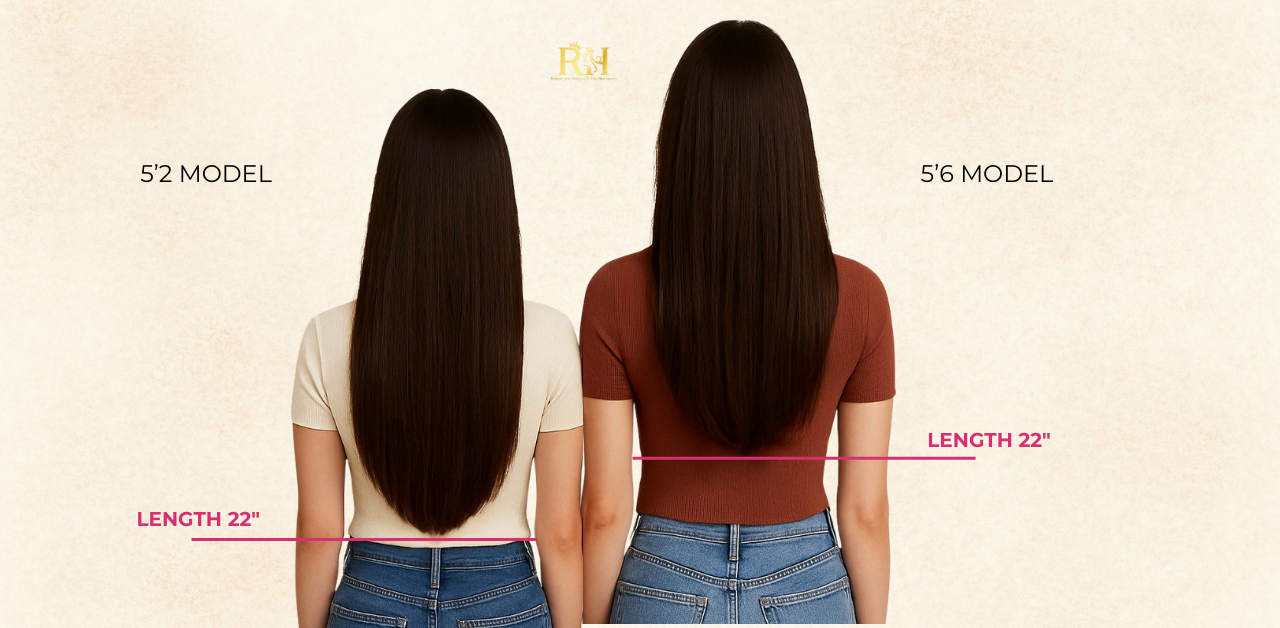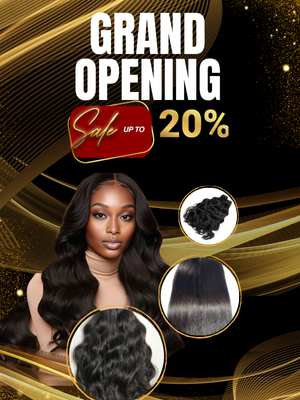When it comes to human hair wigs, the three most popular types you’ll find are Remy hair vs Virgin hair vs 100% human hair (Non-Remy). At first glance, they may all sound similar, but the truth is that each comes with its own unique properties, strengths, and weaknesses. That’s why choosing between them isn’t always straightforward. Still, taking the time to understand their differences is crucial – because the type of hair you buy will determine how realistic your wig looks, how long it lasts, and even how easy it is to maintain.
In this article, we’ll compare Remy hair vs Virgin hair vs Non-Remy hair in detail. By the end, you’ll not only know which option works best for your needs but may also realize why your past experiences with human hair wigs didn’t turn out the way you expected.
Why Human Hair Wigs Are So Popular
Human hair wigs dominate the wig industry for one simple reason: they deliver the most natural look and feel. While synthetic wigs and synthetic blends remain widely available, they simply cannot compete with the versatility and quality of wigs made from real human hair.
Unlike synthetic fibers, human hair can:
Be styled with heat tools like curling irons or flat irons.
Be dyed or chemically treated (depending on the hair type).
Last significantly longer when cared for properly.
This flexibility makes human hair wigs the top choice for people looking for durability, realism, and freedom to change styles as often as they like.
But not all human hair is the same. Its quality is largely determined by three things:
1. Where the Hair Comes From
The majority of hair used in wig manufacturing is sourced from Asia, with raw Vietnamese hair standing out for its silky texture, natural luster, and remarkable durability. Although Chinese, Indian, Cambodian, and even European hair are also considered valuable, none compare to the versatility and superior quality of Vietnamese hair. Thanks to its premium standards at an accessible price, many salon owners regard it as a true “gem,” which has led to its growing rarity in the market.
2. How the Hair Is Collected
The collection method has a huge impact on quality. The best-quality hair is typically gathered from temples, where people voluntarily donate their hair, or directly purchased from individuals who sell their hair in bulk. Lower-quality hair, on the other hand, is often collected from salon floors, shower drains, or hairbrushes-making it much more likely to be damaged or inconsistent.
3. The Manufacturing Process
No matter how the hair is sourced, nearly all wig hair goes through some form of processing. This can include chemical treatments that make the hair shiny and smooth, color processing to unify the shade, or bleaching and dyeing to create specific looks like balayage or ombre. Unfortunately, the more processing the hair undergoes, the weaker and shorter its lifespan will be.
Human hair is generally divided into three primary categories: Remy hair vs Virgin hair vs Non-Remy hair. It’s important to note that Non-Remy hair still falls under the umbrella of 100% human hair. In the sections below, we’ll explore the unique traits that set each type apart, so you’ll quickly gain the ability to recognize the differences among them.
The Three Main Types of Human Hair
All human hair wigs can be classified into one of three categories: Remy hair vs Virgin hair vs Non-Remy hair (often labeled as 100% human hair). Let’s take a closer look at what makes each of these categories unique.
What is Virgin hair?
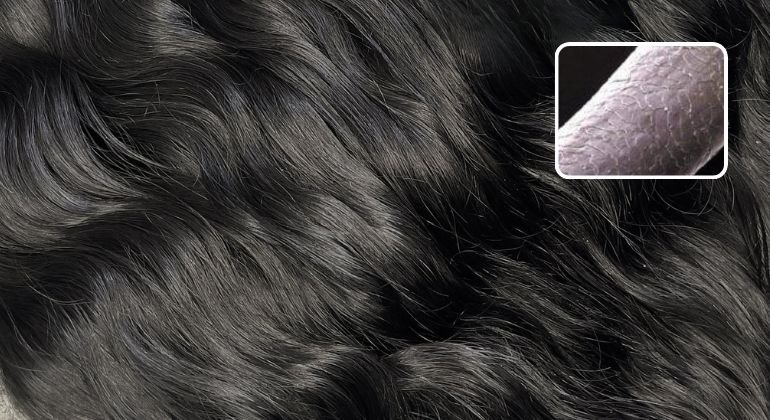
Virgin hair is the gold standard of human hair. It refers to completely unprocessed hair that has never been dyed, permed, bleached, or chemically altered in any way. The cuticles remain intact and aligned, and the hair is collected from a single donor whose natural hair has not been changed.
Because Virgin hair is so pure, it’s highly sought after and considered the best option available in the market. Vendors usually only clean the hair, sew it into wefts, and prepare it for sale without adding any chemical treatments.
Benefits of Virgin Hair
Unmatched quality: It feels, moves, and looks exactly like natural hair because it is natural hair in its purest form.
Longevity: With proper care, Virgin hair can last for years.
Styling freedom: You can dye it, curl it, straighten it, or chemically process it in moderation.
Natural appearance: Virgin hair maintains its natural density, shine, and fullness.
Drawbacks of Virgin Hair
High cost: Because it’s rare and untouched, Virgin hair is the most expensive type of human hair.
Limited availability: Finding true Virgin hair can be challenging because much of the market is oversaturated with processed options.
What is Remy hair?
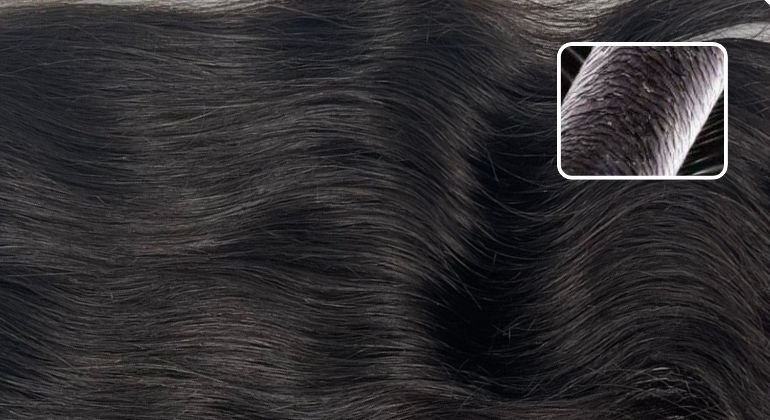
Remy hair extensions is another high-quality option, though slightly different from Virgin hair. With Remy hair extensions, the cuticles are still intact and aligned in the same direction, which minimizes tangling and keeps the hair smooth. It’s often collected from ponytails or shaved directly from the scalp to ensure strand alignment.
The main difference between Remy and Virgin hair is that Remy hair may be processed. For example, it could be dyed to achieve a specific shade or chemically treated to create textures like waves or curls.
Benefits of Remy Hair
Cuticle alignment: Because all strands face the same direction, Remy hair resists tangling and matting.
Natural look: Remy hair maintains body and shine, making it appear healthy and full.
Good durability: With proper care, Remy hair typically lasts 6-12 months.
Affordable alternative: It costs less than Virgin hair while still offering high quality.
Drawbacks of Remy Hair
Limited bleaching ability: While Remy hair can be dyed darker or lightened slightly, extreme bleaching can damage it.
Shorter lifespan than Virgin: Since it may already be processed, Remy hair doesn’t last as long as Virgin hair.
What is Non-Remy Hair Extensions
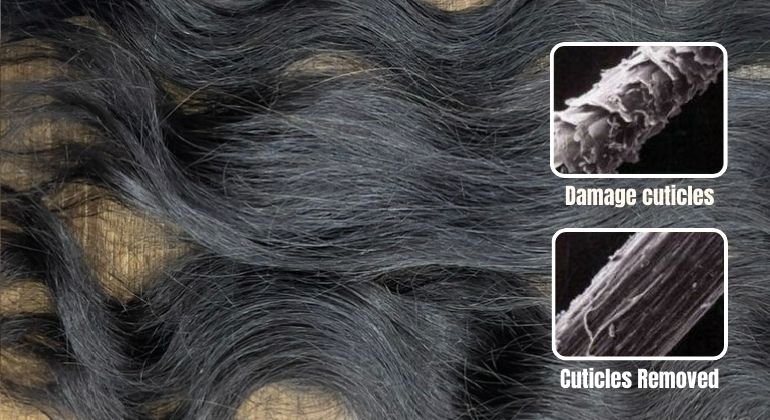
Non-Remy hair, often marketed simply as 100% human hair, is the lowest tier among the three. This type is collected from multiple sources-sometimes in bulk-without ensuring cuticle alignment. As a result, the strands point in different directions.
To make Non-Remy hair extensions more manageable, manufacturers strip away the cuticles entirely and coat the strands with silicone. This gives the hair a smooth, shiny appearance-at least temporarily. Unfortunately, the silicone coating wears off within 4-6 weeks, leaving the hair prone to tangling, shedding, and dullness.
Benefits of Non-Remy Hair
Budget-friendly: It’s the most affordable human hair option on the market.
Wide variety: Available in many pre-made styles, textures, and colors.
Drawbacks of Non-Remy Hair
Short lifespan: Usually lasts around 6 months or less.
Fragility: Stripped cuticles make the strands weak and brittle.
Poor performance with styling: Non-Remy hair doesn’t hold up well under heat, dye, or chemical treatments.
Remy hair vs Virgin hair
Although both are considered high-quality, there are some important differences:
Processing: Virgin hair is untouched, while Remy hair may be dyed or textured.
Price: Virgin hair is significantly more expensive due to rarity and purity.
Durability: Virgin hair can last years, while Remy usually lasts less than one year.
Styling: Virgin hair allows maximum freedom, while Remy has some limitations.
Remy Hair vs Non-Remy Hair Extensions
These two types of hair are worlds apart in terms of quality:
Processing: Remy hair keeps its cuticles intact, while Non-Remy has cuticles stripped and silicone-coated.
Price: Remy hair is more expensive, reflecting its higher quality.
Durability: Remy hair lasts much longer, while Non-Remy breaks down quickly after the coating wears off.
Appearance: Remy hair maintains shine and fullness, whereas Non-Remy often looks thinner and dull after a few washes.
See more details of high quality products at Raw Hair Luxury
How to Differentiate Between Remy hair vs Virgin hair vs Non-Remy Hair
As you’ve learned, virgin hair ranks highest in terms of quality, followed by Remy hair, with non-Remy hair extensions considered the least durable option. But the question is: how can you actually recognize which type you’re looking at? Let’s break it down.
Virgin Hair Characteristics:
Virgin hair usually comes in natural tones-more of a soft black or brown, rather than an intense jet black. A few gray strands may even appear here and there. Compared to non-Remy, virgin hair tends to be denser, although the difference isn’t always visible at first glance. It also feels incredibly soft, smooth, and authentic to the touch, since it’s in its purest, untreated state.
Remy Hair Characteristics:
Remy hair has a sleek, polished look with plenty of shine. However, unlike virgin hair, you’ll often find it in deep jet black shades or even dyed colors. Despite that, it still maintains a healthy, full appearance from the roots all the way to the ends, giving it a rich and luxurious feel.
Non-Remy Hair Characteristics:
With non-Remy hair extensions, uniformity is not guaranteed. If you grasp the ends and flip the bundle upside down, shorter strands will stick out in different directions. It may already look a bit thin or slightly rough at the tips when purchased and this condition only worsens with use. Styling tends to cause more breakage and shedding, while washing often leads to heavy tangling, making it difficult to manage in the long run.
How to Decide Between Remy hair vs Virgin hair vs Non-Remy Hair Extensions
Selecting the right hair type Remy hair extensions, Virgin hair or Non-Remy hair extensions can feel overwhelming if you’re unsure what aspects matter most. To make things easier, let’s break down the key points you should consider.
Quality: Virgin hair > Remy > Non-Remy hair
Virgin hair stands at the top when it comes to purity and performance. It offers unmatched naturalness and styling versatility. Remy hair comes next, still delivering a smooth and healthy look. Non-Remy, while genuine human hair, falls behind due to its lower durability and manageability.
Price: Virgin hair > Remy > Non-Remy
Virgin hair carries the highest price tag, but it’s also the most cost-effective in the long run because it can last for years. Remy hair is a mid-range option-more affordable than virgin but longer-lasting than non-Remy. Non-Remy is the budget-friendly choice, but its short lifespan means you’ll likely have to replace it several times a year.
Styling: Virgin > Remy > Non-Remy
If you want maximum flexibility-bleaching to platinum, perming, straightening, or curling-virgin hair is your best bet. Remy hair gives you some options, like coloring or bleaching to lighter shades, but doesn’t tolerate strong chemical treatments. Non-Remy hair extensions is the most limited, often struggling with dye, bleach, or even heat styling tools.
Lifespan: Virgin > Remy > Non-Remy
Virgin hair can last anywhere from 1 to 10 years with proper care. Remy hair extensions usually holds up for about a year or slightly more. Non-Remy hair extensions, by comparison, generally lasts around six months before it starts showing significant wear.
Fullness & Density
Remy vs Virgin hair have naturally thicker strands compared to processed Non-Remy hair, giving them a fuller, more voluminous appearance even when the density is the same.
Overall, Remy vs Virgin hair hair both offer superior performance compared to non-Remy. That said, non-Remy hair shouldn’t be overlooked. It comes in a variety of wig styles, looks reasonably natural, and is an affordable option for those on a tighter budget. With the right choice, even non-Remy hair can be a good solution depending on your needs.
In addition, American users are very fond of using Raw Hair, especially salons and hairdressers.
Final Thoughts
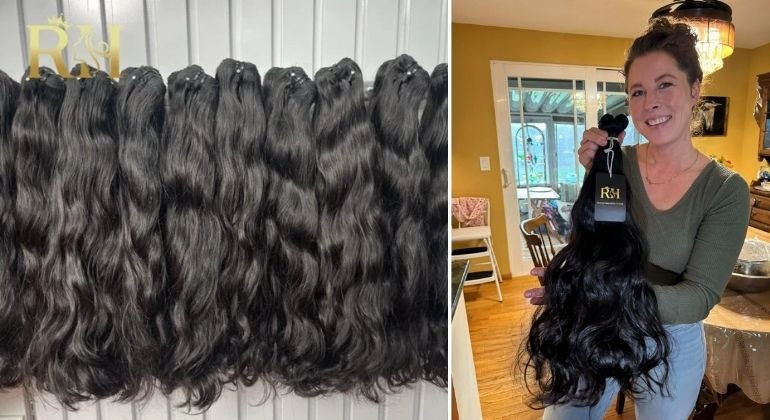
Understanding the differences between Remy hair vs Virgin hair vs Non-Remy hair ensures you get the best value for your money. Virgin hair is the ultimate choice if you want top-tier quality, longevity, and styling versatility. Remy hair extensions is a solid middle ground, offering good quality at a more affordable price. Non-Remy is the budget option, suitable for those who want a temporary style without spending too much.
If you’re looking for the highest-quality Virgin hair, explore our premium collection today-you won’t find a better option anywhere else.
The key is choosing a reliable supplier. A reputable partner like Raw Hair Luxury ensures genuine products, stable quality and competitive prices. On the other hand, cooperating with the wrong supplier – whether due to lack of knowledge or being tempted by cheap offers – can lead to financial loss, wasted effort, and for the salon owner, the customer experience will not be as expected.
At Raw Hai Luxury, you will experience the most premium products, favored by many users in the US such as: Weft hair, Clip-in hair, Lace closure hair, Lace frontal hair and Wig hair,… many products with different textures are waiting for you to discover.
Contact us now for more details:
Instagram: https://www.instagram.com/rawhairluxury/
Facebook: https://www.facebook.com/rawhairluxury/
